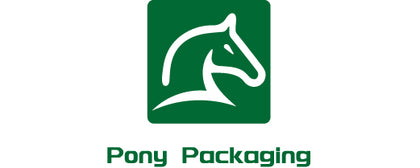Is There A Growing Need For Eco-Friendly Food Packaging?
With growing awareness and a heightened sense of concern about the environmental consequences of conventional food packaging, the need for eco-friendly solutions has reached a tipping point. As our planet struggles to cope with the alarming levels of waste accumulation, the demand for sustainable food packaging has become more urgent than ever before. This blog post seeks to emphasize the significance of embracing eco-friendly food packaging and delve into a range of viable alternatives, including biodegradable containers, compostable packaging, and environmentally friendly food containers.
- Understanding Eco-Friendly Food Packaging: Eco-friendly food packaging refers to the use of materials and techniques that minimize harm to the environment throughout the packaging lifecycle. Traditional packaging, such as single-use plastics and Styrofoam, contribute to pollution, waste accumulation, and the depletion of natural resources. In contrast, eco-friendly alternatives prioritize sustainability by employing materials that are biodegradable, compostable, or recyclable.
- The Rise of Biodegradable Food Packaging: One of the key solutions gaining traction is biodegradable food packaging. These containers are designed to break down naturally over time, reducing their environmental impact. Biodegradable takeaway containers and clamshell containers, for instance, offer a sustainable alternative to conventional plastic containers. Made from renewable resources like plant-based materials, they decompose into organic matter, minimizing the burden on landfills and oceans.
- Compostable Food Packaging: Compostable food packaging takes sustainability a step further. These containers are not only biodegradable but also provide added value by enriching the soil. Compostable materials, such as cornstarch and bagasse, can be broken down through industrial composting processes, creating nutrient-rich compost for agricultural purposes. By using compostable food packaging, we can close the loop and support a circular economy.
- The Benefits of Eco-Friendly Food Packaging: a. Environmental Preservation: Eco-friendly food packaging helps reduce waste, prevent pollution, and conserve natural resources. By choosing biodegradable or compostable options, we can minimize our carbon footprint and preserve the planet for future generations. b. Consumer Preference: As more individuals prioritize sustainable living, eco-friendly food packaging has become a selling point for businesses. By catering to consumer preferences, companies can attract environmentally conscious customers and build brand loyalty. c. Regulatory Compliance: Governments worldwide are implementing stricter regulations on single-use plastics. Embracing eco-friendly packaging options ensures compliance with these regulations, avoiding penalties and legal complications.
- Embracing Change: Transitioning to eco-friendly food packaging may require initial investment and operational adjustments, but the long-term benefits far outweigh the costs. Businesses can adopt sustainable practices, collaborate with packaging manufacturers to develop innovative solutions, and educate customers about the importance of eco-friendly choices. Together, we can make a substantial impact on reducing waste and promoting a greener future.
Conclusion: The increasing demand for eco-friendly food packaging reflects our collective commitment to preserving the environment and building a sustainable future. By embracing biodegradable, compostable, and environmentally friendly packaging alternatives, we can reduce waste, protect ecosystems, and promote responsible consumption. The time has come for individuals, businesses, and governments to prioritize eco-friendly food packaging as an essential step towards a greener and healthier planet.


